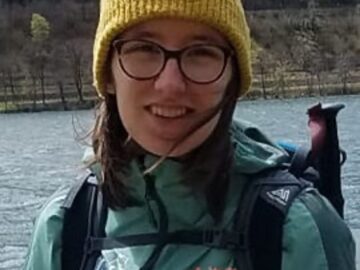Katy Burrows
PhD
internal research fellow
Biography
I am a remote sensing scientist working on shallow landslides. I graduated from Durham University in 2020 with a PhD in Earth Sciences “Rapid Detection of Earthquake-triggered landslides with satellite radar”. Following this, I moved to France to work for 2 years at Géosciences Environnement Toulouse (GET) as a CNES research fellow. Here I worked on the development and application of Sentinel-1 methods to obtain landslide timing information during long rainfall events. I began work at ESA in May 2023 and will work on combined remote sensing of soil moisture and landslides.
Research
I graduated from Durham University in 2020 with a PhD in Earth Sciences. The overall aim of this project was to develop tools that could be used after an earthquake to generate an overview of the areas worst affected by landslides. For this, I developed and tested new methods of rapid landslide detection using synthetic aperture radar (SAR) data acquired by the Sentinel-1 and ALOS-2 satellites.
Following this, I moved to France to work for 2 years at Géosciences Environnement Toulouse (GET) as a CNES research fellow. At GET, I developed a new method of using Sentinel-1 to constrain the timings of rainfall-triggered landslides. When applied to the Nepal monsoon, this method allows us to associate landslides with particular periods of intense rainfall during a period when cloud-cover obscures optical satellite images. We have also been able to quantify the effect of a large earthquake in 2015, which led to landslides occurring earlier and in dryer conditions than in a normal year.
While at ESA, I hope to develop a combined approach to studying soil moisture and landslide activity based on Sentinel-1 amplitude and coherence. Both changes in soil moisture and landslides alter the scattering properties of the Earth’s surface, giving them a signal in Sentinel-1 images. In remote areas, like the Himalayas, this would allow us to better understand how landslide activity and soil water content evolve during the monsoon.
Publications
https://agupubs.onlinelibrary.wiley.com/doi/10.1029/2023GL104720


